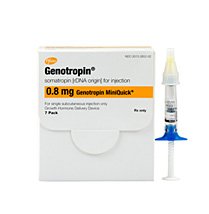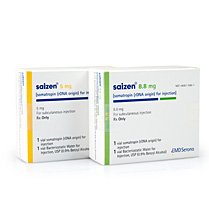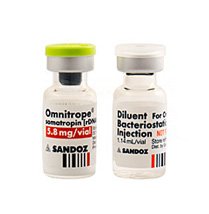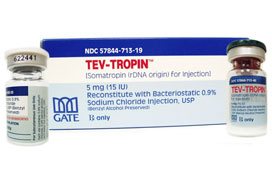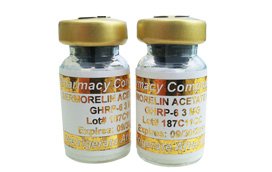Progesterone Therapy for Hyperplasia

Hysterectomy is no longer the only treatment for endometrial hyperplasia. Doctors are now using progesterone therapy for hyperplasia with excellent outcomes.
- What is Hyperplasia?
Endometrial hyperplasia is the overgrowth of the endometrium – uterine lining that may or may not progress to endometrial cancer.
- What Causes Hyperplasia?
Hormones that are out of balance are the number one cause of hyperplasia. In the early part of the monthly cycle, estrogen stimulates the growth and development of the uterine lining. Progesterone later counterbalances this growth and helps the uterus to shed the lining if conception does not occur. When estrogen is unopposed for a long time, an overgrowth of the uterine lining develops. That is why doctors now look at using progesterone treatment for endometrial hyperplasia.
Risk factors for endometrial hyperplasia include:
- Overweight/obesity
- Estrogen therapy without added progesterone
- Polycystic ovarian syndrome
- Estrogen-secreting ovarian tumors
- Different Types of Endometrial Hyperplasia
Because there are different types of hyperplasia, the doctor will collect a biopsy sample to send to the lab for checking. Determining which type of endometrial hyperplasia is present is important because one of them produces a much higher risk of developing into cancer.
Endometrial Hyperplasia is classified into these four different types as shown in the chart below:
Type |
Description |
Risk of Endometrial Cancer Progression |
Simple |
Contains a benign proliferation of endometrial glands that may be dilated and irregular – the nuclei are typically uniform, lack back-to-back crowding or cellular atypia. |
1 percent |
Complex |
Has a significantly irregular endometrium with abnormal vasculature – endometrial glands have irregular outlines, back-to-back crowding, and architectural complexity but no atypia. |
3 – 5 percent |
Simple with Atypia |
Loss of polarity and varying degrees of nuclear atypia with simple hyperplastic lesions. |
8 – 10 percent |
Complex with Atypia |
Loss of polarity and varying degrees of nuclear atypia with complex hyperplastic lesions. |
25 – 35 percent |
Progesterone Treatment Options for Hyperplasia
Endometrial hyperplasia is dependent on estrogen, so progesterone treatment for hyperplasia is used to induce regression. In many cases, doctors use progestin to decrease glandular cellularity by triggering apoptosis in the lesions.
Another treatment, medroxyprogesterone acetate (MPA), inhibits angiogenesis in the myometrium in complex hyperplasia.
While spontaneous regression will occur in about 80% of cases without atypia and 50% in complex with atypia, it is still recommended to use progesterone for hyperplasia benefits to prevent the progression to cancer.
Doctors will consider two areas in the management of endometrial hyperplasia:
- The classification of hyperplasia
- The desire for conception and childbearing in the future
For patients with complex hyperplasia with atypia, hysterectomy is often discussed if a woman is finished with childbearing.
The use of progesterone treatment for simple hyperplasia is extremely effective. In studies of four different trials, women with either simple or complex endometrial hyperplasia induced by estrogen therapy responded with a 90% regression rate when MPA was given either cyclically for 3 months of continuously for 6 weeks, and estrogen therapy was discontinued.
Oral progesterone therapy also brought positive benefits to women with hyperplasia unrelated to estrogen therapy.
Other options for treatment include the following:
- Micronized progesterone vaginal cream – in a study of 60 women with simple endometrial hyperplasia and 18 with complex, 90.5% experienced complete regression following 3 to 6 months of treatment.
- Intramuscular progesterone therapy – of 192 women with atypical hyperplasia who receive large, 500 mg weekly doses of MPA for 3 months, 96.4% experienced loss of atypia.
- Levonorgestrel intrauterine treatment – this intrauterine device is effective for 5 years and can also bring regression of symptoms.
When it comes to receiving progesterone for hyperplasia, side effects are extremely rare. Most women have no adverse effects except when extremely high doses of progesterone are required in cases of complex hyperplasia with atypia. Higher doses could increase appetite and lead to weight gain which often raises estrogen levels.
Doctors will check the patient after three months of treatment. If necessary, the dosage may be increased at this time if the results are not positive. If after nine months of treatment no progress is noted, then treatment is considered a failure and surgical intervention may be necessary.
If surgery is necessary, premenopausal women should have their uterus and cervix removed. The ovaries are optional, but since twenty-five percent of women with uterine cancer also have cancer cells in the ovaries, removal may be recommended. In post-menopausal women, it is also recommended to remove the ovaries and bilateral tubes during the surgery.
For additional information about progesterone therapy and hyperplasia, please contact Greenberg Health to speak with a hormone specialist.


















 Norditropin
Norditropin